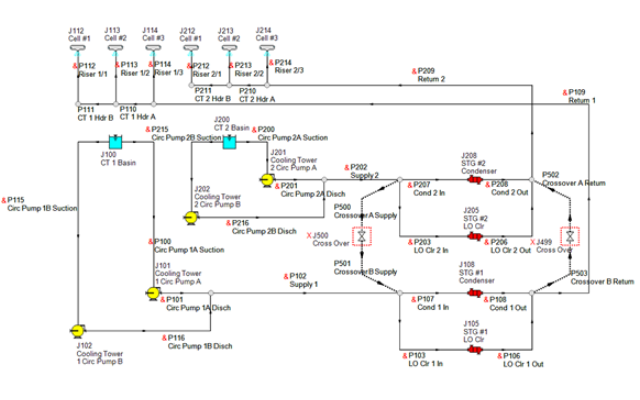Using Applied Flow Technology modeling software gives engineers the power to analyze multiple scenarios and address the efficiency of the process. However, engineers can still easily miss intermediate solutions that could potentially save costs and increase efficiency.
Designers can incorporate significant savings by designing both the pump and the piping system concurrently, especially when flow analysis software with automated sizing capabilities like AFT’s Automated Network Sizing is used to enhance this process.
There are limits to how much an engineer can achieve with hand calculations to determine the ideal sizing for a pipe system. While the head required for a single pipeline may be simple to calculate, it is more complex for pipe networks. AFT provides hydraulic solvers to accurately model the system and allows different system configurations to be calculated quickly, particularly since it is capable of analyzing multiple operating cases within one model.
For simple sizing cases, such as sizing a control valve for the system, the software can be used to simply set the flow or pressure demand necessary, then it will report the necessary pressure drop needed from the component.
However, this process becomes more difficult as the sensitivity of the system to multiple components must be determined. The engineer must select different combinations to compare as design cases. With this iterative approach the engineer is limited in the number of cases they can compare.
For instance, consider the cooling system in Image 1. This has four pumps, four heat exchangers and 34 different pipes, which could be sized separately. By assuming the pipes are the same size the calculation can be greatly simplified, but the system will require a larger pump and lose efficiency.
A more complex solution involves splitting the pipes into multiple groups and varying the pipe size for each. Using different pipe sizes throughout the model allows the pipe sizes to be fine-tuned but requires some extra modeling to compare scenarios for the system. Total savings may increase in some scenarios, but it is still difficult to determine if the most efficient design has been found. Since the pump and system must be sized sequentially, rather than being sized in tandem, it is possible to miss intermediate combinations of system and pump configurations that are likely more efficient overall.
Ultimately this process can be simplified by using AFT’s Automated Network Sizing to automatically run different potential cases and iterations. Engineers simply have to enter their design requirements for the system as inputs with the system sizing as outputs, rather than guessing the system design and then verifying the design requirements.
A sophisticated sizing software like Applied Flow Technology will have the ability to optimize for multiple operating conditions at once to consider the effects of using different operating conditions throughout the year or having sections of the model temporarily isolated.
It is also possible to account for a safety factor directly in the optimization process. This means the system can be designed for uncertainty in the current demand, as well as consider the difference in operation as demand is expanded.
As rising demands in piping systems continue to introduce new challenges, choosing the right tools will help account for variable demand to choose not only the best pump, but to effectively size the piping system for optimal operation.




